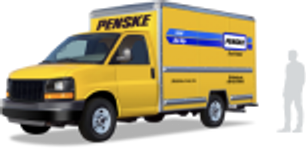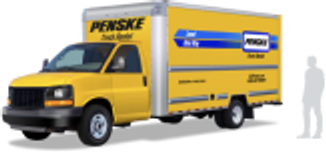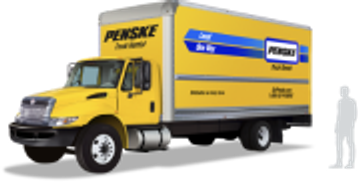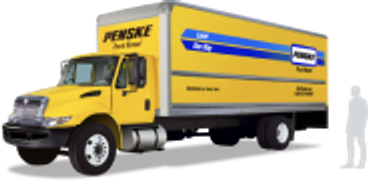Tips for Driving a Moving Truck in the Winter
Whether it’s snow, sleet or ice, winter weather can cause dangerous road conditions. To help make winter moves and drives smooth, we offer these safety tips.
Want more guidelines for safe truck driving? Read about driving a truck.
Before You Hit the Road
- If the roads are covered in snow or ice, the best thing you can do is wait until conditions improve. But if that isn’t possible, you’ll want to make sure you follow your local and state’s guidelines for road safety.
- Check weather sources before your move to help plan your trip. When traveling, listen to local radio stations for the forecast.
- Make sure you have a snowbrush and ice scraper in your truck during your move to remove snow and ice from all windows, lights, hood and roof.
- Stock your vehicle with basic supplies like warm clothing, blankets, flashlights, extra food, bottled water, road flares and a first aid kid. Sunglasses help cut glare from snow.
- Have extra help so you spend less time in the cold
- Any trucks travelling through mountain passes and northern states may be required to have tire chains available in case of a snow or ice storm. Tire chains are not provided with truck rentals.
While Driving
- Drive a truck slower than you would drive a car — especially in bad weather.
- Leave extra room between the truck and the vehicle in front of you. Trucks require even more time and room to stop in bad weather.
- Don't force too much power on the drive wheels; this can cause you to lose traction when driving in the snow and result in a side skid.
- Use extra caution when traveling across bridges and overpasses. They freeze before the road.
- Keep your tank full; a half-full tank can lead to water condensation in the fuel line.
- Be aware of wind conditions and load weight.
- Vision can be hindered when driving during a bright, sunny day and the surroundings are snow covered. Wear sunglasses to reduce glare and improve vision.
When You’re Behind the Wheel of Our Diesel Rental Trucks in Cold Weather
- Always park your truck out of the wind.
- When refueling, seek a station that treats their fuel with a cold weather additive.
- Turn off all lights to allow batteries to maintain a full charge. Cold weather decreases the battery output.
- If the temperature is below 10 degrees Fahrenheit, repeat the "wait to start" process three to four times before starting the engine.
The Penske Fuel Estimator has been designed to help show you your potential fuel costs.
Important truck driving tips and tricks to help keep you and others safe on the road.
In the unlikely event of a breakdown, one call to the Penske 24/7 Roadside Assistance team is all you need.
For every day you rent, we're giving you a day on us. So if you reserve for two days, you will be charged for one. We know moving can be stressful. So relax and enjoy the day on us during these uncertain times. Read more
Penske’s Rent for a Day, Get a Second Day Free Special promotional discount applies only to the daily vehicle rental charges. All taxes, fees (including but not limited to vehicle use taxes), and surcharges (including but not limited to the Mileage Fee, Environmental Fee, Vehicle License Fee) are extra. Optional products such as supplemental insurance, Limited Damage Waiver (LDW), hand trucks, furniture pads, and dolly’s are extra. Fuel charges are extra. Promotional discount is valid only in the Contiguous United States. Customer must select the number of days for the rental and then the promotional discount is automatically applied at checkout. The promotional discount is available on household / personal local rentals only. The promotional discount is valid from 12:01AM ET, 10/1/2022 until 11:59PM ET, 11/11/2022; provided that the Customer must pick up the vehicle on a Sunday, Monday, Tuesday, or Wednesday during the promotional period. Limit of one use per Customer. Maximum of five (5) free day’s rental charges per Customer. This offer is subject to vehicle availability at the time of reservation. Promotional discount may be combined with other coupons, offers, or discounts. This promotional discount is not redeemable for cash or cash equivalent. The promotional discount is not transferable and Penske reserves the right to change terms at any time in our sole discretion.
With just a click or two, you can reserve a truck, find the nearest Penske location, watch helpful videos and more.













